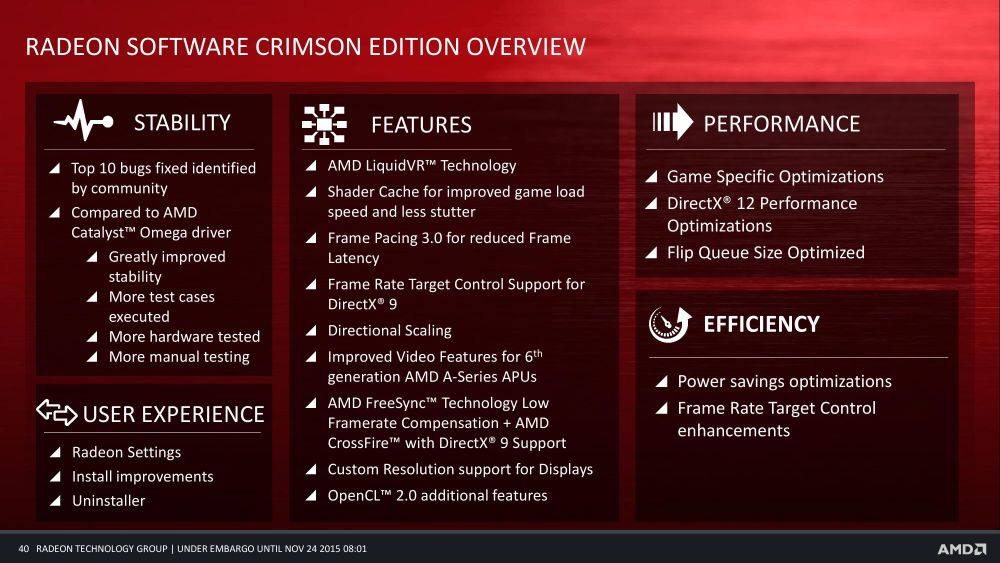The Radeon Software Crimson Edition driver is the child of the newely created AMD Radeon Technologies Group led by Raja Koduri and back when it was announced, it promised some big changes to the entire concept of AMD drivers and control center.
The earlier teaser of the AMD Radeon Software Crimson Edition driver pretty much focused on the UI changes and the new Radeon Settings control panel application that should change the Catalyst Control Center. Just as it was the case with Omega drivers, the Radeon Software Crimson Edition is an annual release and simply points the way in which future AMD graphics card drivers will be developed. AMD will still keep the same release cycle of driver updates, although these will now be simply known as Radeon Software releases.
AMD has also started to release more and more beta driver releases focused on bringing optimizations for new games but also noted that it will focus on bringing more WHQL releases in the future, or precisely to have a total of six major WHQL releases next year. AMD also promises better quality assurance, providing more automated and manual test cases, various system configurations and implementation of the latest technologies.
When it comes to Radeon Software Crimson Edition, which includes Radeon Software 15.11 driver, we will be getting plenty of new features and improvements, some which will work with AMD's new Radeon Settings control panel.
The list starts with a couple of improvements for now aging DirectX 9 API, including added support for multi-GPU Frame Pacing, Crossfire Freesync and Frame Rate Target Control. While these features were previously available with other DirectX APIs, they were not available for DirectX 9.
In addition to added features for DirectX 9 API, AMD has also implemented its Liquid VR, a collection of virtual reality related technologies. This pretty much makes AMD ready for the announced consumer launches of the Oculus Rift and HTC Vive virtual reality headsets. While AMD has previously released the Liquid VR SDK to developers, the new Radeon Software Crimson Edition is the first driver to have Liquid VR feature set enabled within the consumer driver.
The new AMD Radeon Software Crimson Edition driver also brings the new Shader Caching feature, which should bring reduced game load times. This is done by caching compiled game shader routines and reusing them when the game is launched. Since DirectX actually lacks a built-in shader caching feature, this is actually a really interesting feature which should also reduce stutter which is sometime caused by on-the-fly shader compiling.
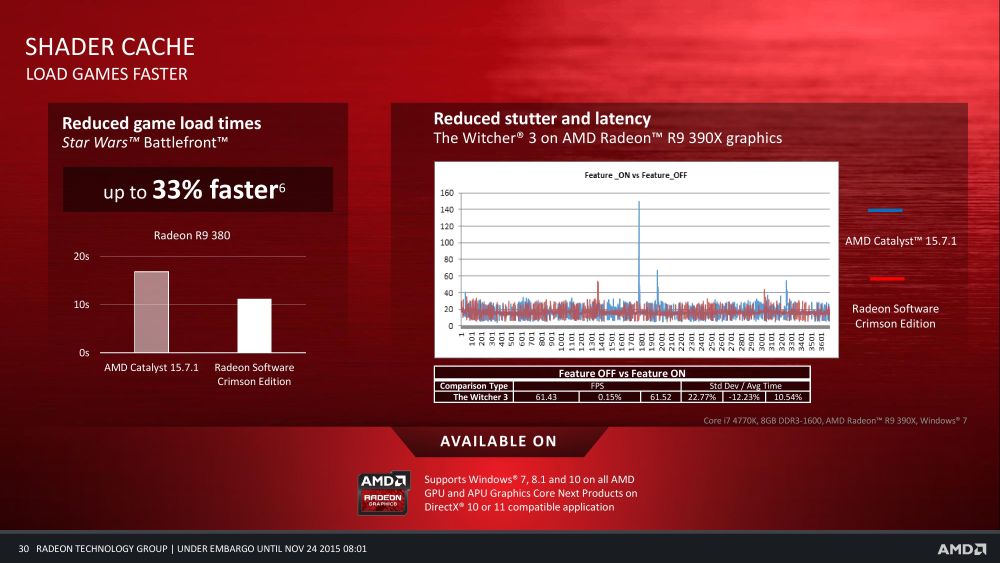
AMD has also made some changes to reduce the DirectX flip queue size. The flip queue is pretty much responsible for storing rendered frames or queue them up in order to provide steady frame delivery. This should bring reduced latency optimizations which will improve cursor and keyboard responsiveness.
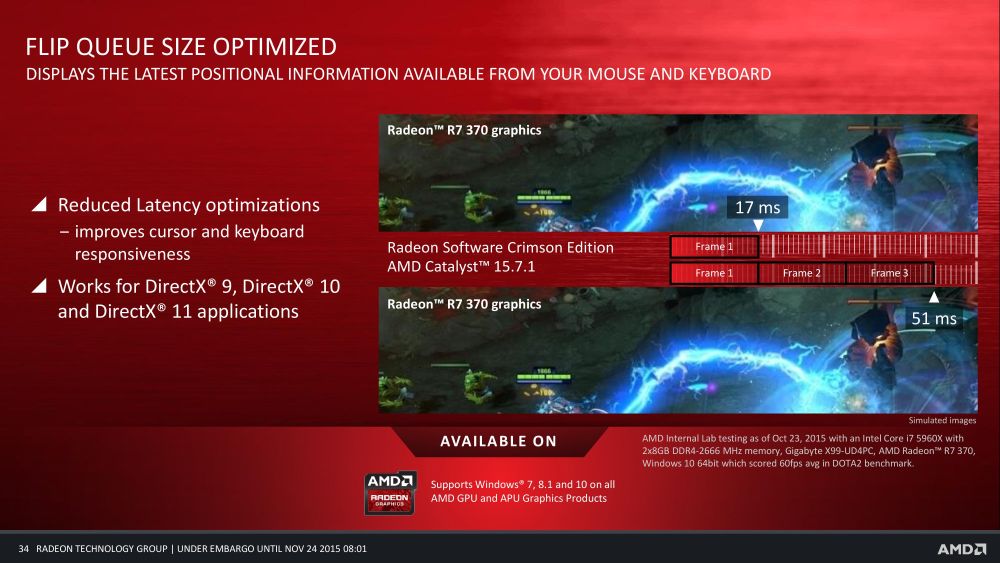
AMD also notes that it managed to reduce the power consumption of video decoding on some graphics cards, providing up to 23 pecent increased performance per watt. While AMD did not go into specific details, it appears that this is mostly noticable on Fiji-based Radeon R9 Fury series and R9 Nano graphics card.
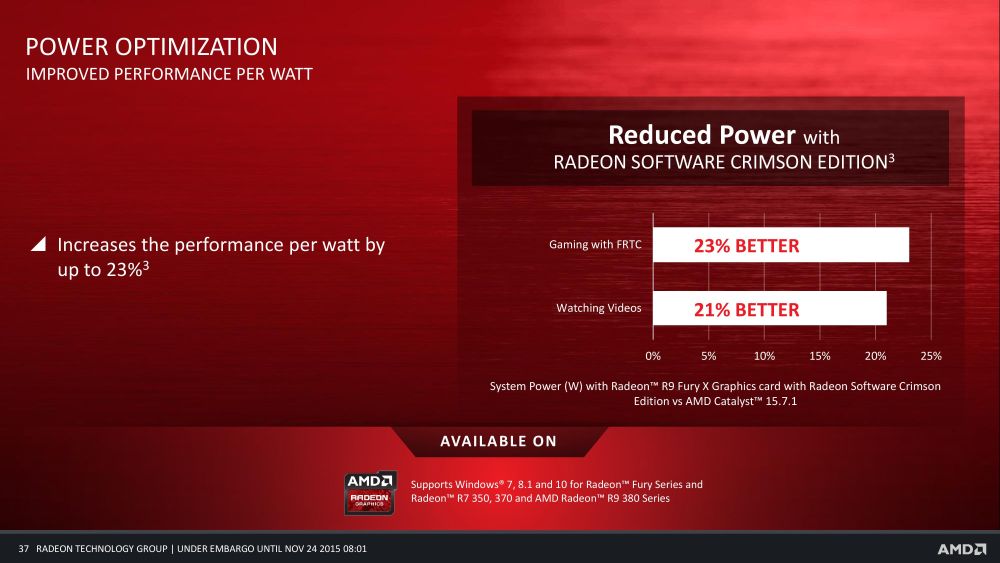
In addition to so-called performance improvements, AMD is bringing a couple of display specific improvements with the new Radeon Software Crimson Edition drivers, including Custom Resolution Support as well as some FreeSync and Framerate Target Control improvements.
While custom resolution support is pretty much self explanatory, the Freesync improvements include low framerate compensation (LFC) which brings significant changes on how Freesync works on the GPU level. AMD had issues with minimum refresh rates where a Freesync monitor would go into v-sync or non-Freesync mode whenever the framerate drops below minimum refresh rate of the monitor. According to the slide, AMD has fixed those issues now and it does not include any fix on the monitor, but is rather done on the GPU-side of things. AMD does note that LFC only works on monitors that have a maximum refresh rate greater than or equal to 2.5 times the minimum refresh rate (30Hz to 75Hz).
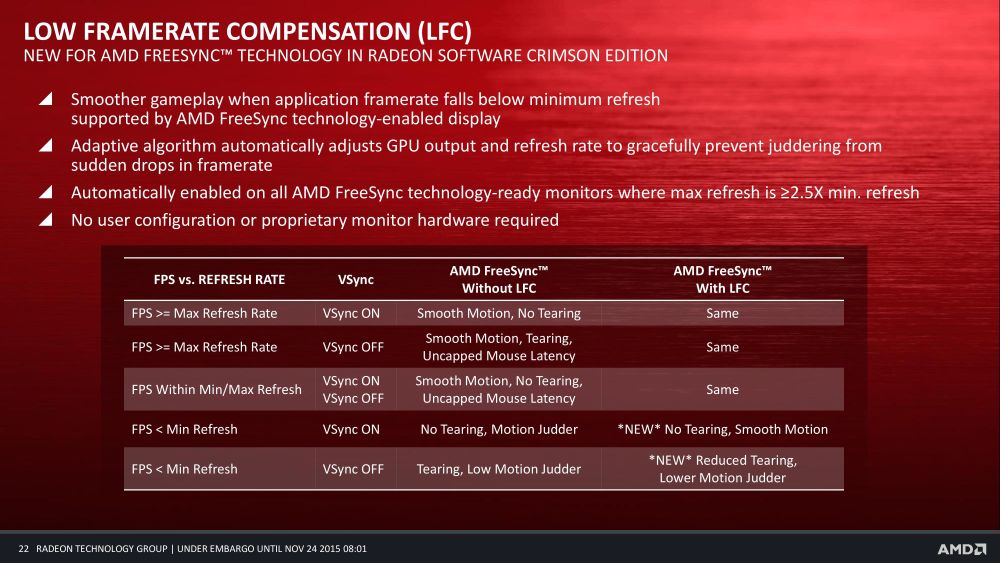
AMD introduced Framerate Target Control (FRTC) feature with the launch of Fiji-based Radeon R9 Fury series graphics cards as an alternative to v-sync, allowing users to cap the framerate via AMD control panel. That same feature now has a wider range, from 30 to 200fps, allowing a much better control over the graphics card clocks.
AMD also brought plenty of visual changes that we already talked about during the Crimson preview and these mostly include a new look of the Radeon Settings application, which will replace the Catalyst Control Center. These are pretty much just visual details but doe bring 10 times faster startup, new and more intuitive navigation, new game manager, new overdrive tab, new video, display and Eyefinity tabs and more.
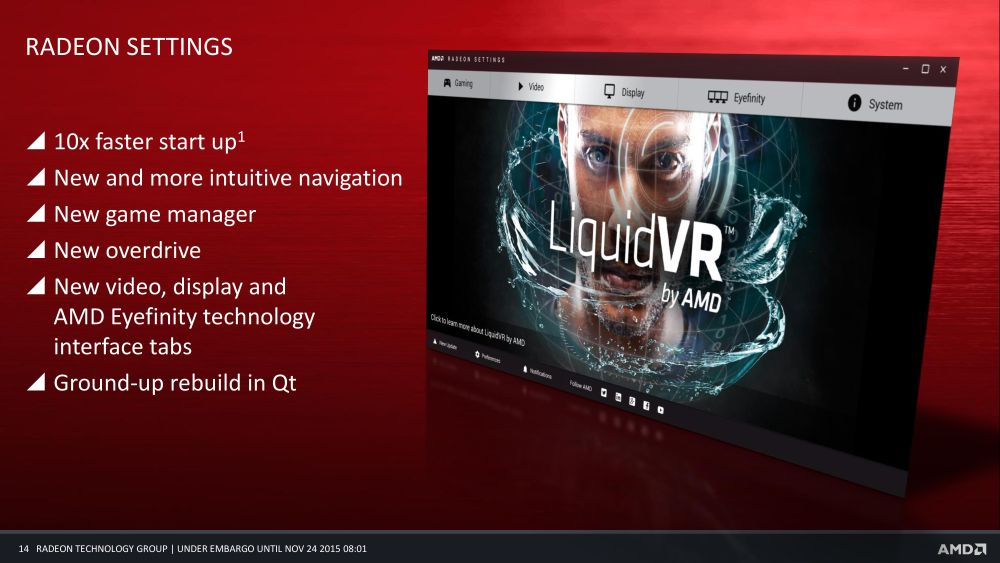
There aren't many performance improvements in the new Radeon Software Crimson Edition driver as AMD promises of up to 20 percent improvements in specific games and on specific hardware. AMD previously noted that Radeon Software Crimson is not about performance improvements and that those will be included in the later releases.
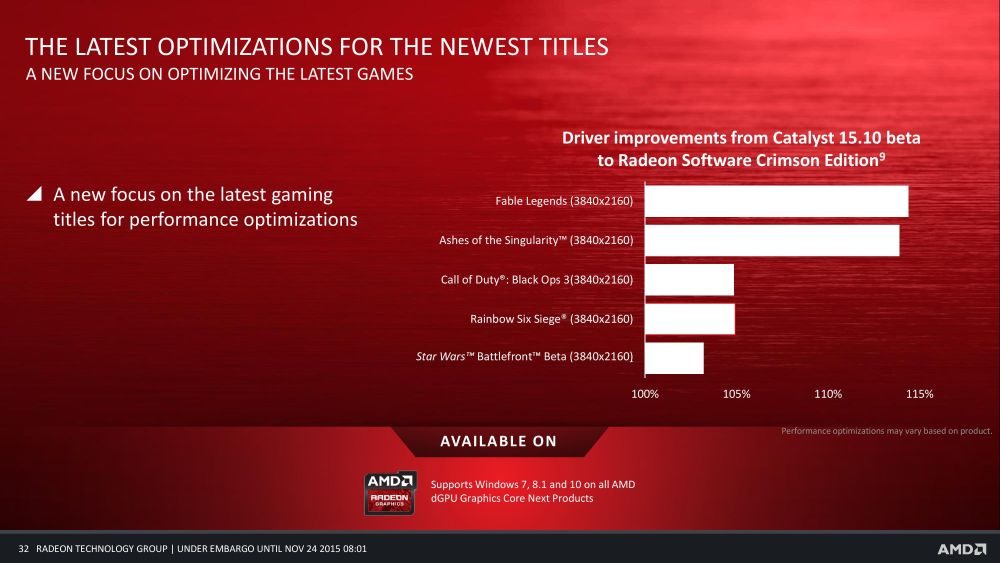
At the end, AMD new Radeon Software Crimson Edition drivers are quite impressive and bring both plenty of new features, new look, performance improvements, stability and bug fixes and more. We really need to congratulate both AMD and its new Radeon Technology Group as Crimson drivers are certainly a step in the right direction.
"As the primary way that people interact with our products, our software deserves to be viewed as a top priority, and going forward that's exactly what we're doing, delivering easy-to-use software that is packed with real user benefits, starting with Radeon Software Crimson Edition," said Raja Koduri, senior vice president and chief architect, Radeon Technologies Group. "Radeon Technologies Group is laser-focused on the vertical integration of all things graphics, propelling the industry forward by driving performance per watt, creating innovative technologies and ensuring that the software supporting our GPUs is world class."
Hopefully, AMD and its Radeon Technology Group will have plenty of other pleasant surprises for us in 2016.
